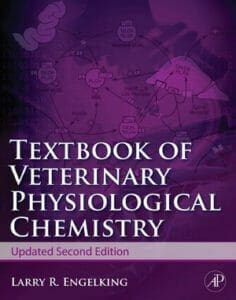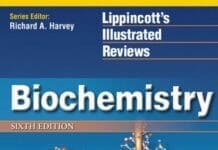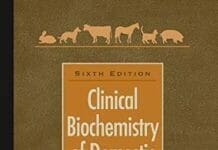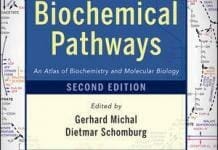
By Stephen Reed
Essential Physiological Biochemistry An organ-based approach PDF Book provides a fresh, accessible introduction to human metabolism that shows how the physiological actions of selected organs can be explained by their particular biochemical processes.
Focusing on metabolic integration, rather than pathways, this book opens with three introductory chapters that explore the principles of metabolism and its control before moving onto ‘themed’ chapters that investigate liver, communication systems (endocrine and neurological), blood and vascular system, muscle and adipose tissue and renal biochemistry.
Targeted at non-biochemistry majors who need to get to grips with key biochemical concepts and ideas, Essential Physiological Biochemistry An organ-based approach PDF is an essential guide for all undergraduate biomedical science, sports science, nutrition and other allied health students.
Essential Physiological Biochemistry An organ-based approach Features:
- A fresh, accessible primer that adopts a unique, organ-system based approach to human metabolism.
- Assumes only a basic understanding of chemistry.
- Chapters are arranged specifically to enable readers to grasp key concepts and to aid understanding.
- Some chapters include ‘Case Notes, illustrating key aspects of metabolism in cells, tissues and organs.
| File Size | 6 MB |
| File Format | |
| Download link | Free Download | Become a Premium, Lifetime Deal |
| Support & Updates | Contact Us | Broken Link |
| Join Our Telegram Channel |  |

![The Absolute, Ultimate Guide to Principles of Biochemistry [Study Guide and Solutions Manual] The Absolute, Ultimate Guide to Principles of Biochemistry study guide and solutions manual PDF](https://www.vet-ebooks.com/wp-content/uploads/2023/04/the-absolute-ultimate-guide-to-principles-of-biochemistry-study-guide-and-solutions-manual-235x300.jpg)























![Ettinger’s Textbook of Veterinary Internal Medicine 9th Edition [PDF+Videos] Ettinger’s Textbook of Veterinary Internal Medicine 9th Edition [True PDF+Videos]](https://www.vet-ebooks.com/wp-content/uploads/2024/10/ettingers-textbook-of-veterinary-internal-medicine-9th-edition-100x70.jpg)

![Textbook of Veterinary Diagnostic Radiology 8th Edition [PDF+Videos+Quizzes] Thrall’s Textbook of Veterinary Diagnostic Radiology, 8th edition PDF](https://www.vet-ebooks.com/wp-content/uploads/2019/09/textbook-of-veterinary-diagnostic-radiology-8th-edition-100x70.jpg)






